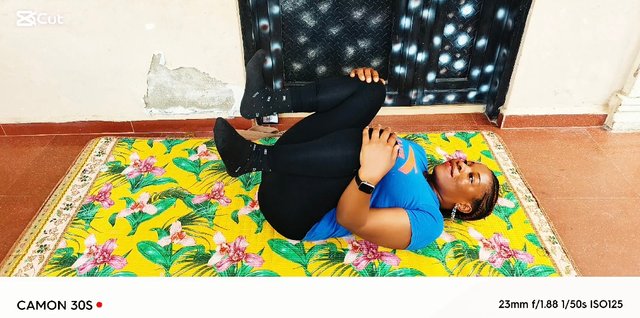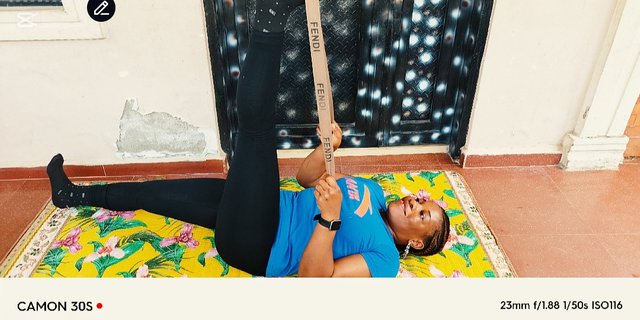Steemit Learning Challenge-S21W2; Knee Osteoarthritis
Are you battling knee Osteoarthritis, or do you know someone who's facing this health challenge? Oh, you're not alone; many, especially people over 50 years, are having issues with their knees, so this week, join us in the fight against this common yet painful condition that affects millions worldwide. Hi @stef1 @eliany and @iddy I invite you people to share your insights and innovative strategies for managing knee osteoarthritis in this educative contest.
@ashkhan dear, your tips on pain relief and exercise routines were simply workable! I did the exercises, and I will share my feelings later; though I never experienced knee osteoarthritis, I know someone this might be helpful to, and I won't hesitate to teach and empower her on her journey to better joint health. I'm inviting everyone to join this course, gain knowledge, raise awareness, then spread knowledge, and support each other in overcoming the challenges of knee osteoarthritis.
What's knee OA? Write in your own words after getting knowledge from the lesson post. |
|---|
Knee Osteoarthritis: Is the gradual breakdown of the cartilage in the knee joint, which leads to pain, stiffness, and reduced mobility over time.
So many factors like obesity, aging, previous joint injuries, and genetics contributed to this condition. As the cartilage worsens, the bones may begin to rub against each other, and this will cause inflammation and swelling on the knee, causing the patient discomfort. These symptoms become worse with activity but improve with rest, they can affect the quality of our daily life significantly.
Diagnosing Knee osteoarthritis involves:
- Physical examination
- Review of medical history
- Imaging study like X-rays or MRIs.
Treatment options: for knee osteoarthritis range from conservative approaches like physical therapy and meditations to more advanced measures like injections (corticosteroid) or surgery for very serious cases. The truth is early intervention is the key to managing symptoms & maintaining joint function in people with knee osteoarthritis.
Types Of Knee Osteoarthritis:
There are several types of knee osteoarthritis, and each of them affects the joint in different ways. The most common type of OA is primary osteoarthritis, which occurs because of natural aging and the gradual wear and tear on the knee joint.
Secondary osteoarthritis: is the kind of osteoarthritis that is developed due to injury, infection, or any other type of medical condition that affects the knee.
Post-traumatic osteoarthritis: occurs after a person sustains an injury to the knee; it could be a fracture, ligament injury, or meniscal tear.
Each kind of OA has a different degree of pain, swelling, and mobility issues; it could be mild, moderate, or severe.
How would you diagnose a knee OA? Any clinical investigation or assessment tests? |
|---|
To diagnose knee osteoarthritis, I would follow some clinical investigations and assessment tests that are commonly used:
I will Review The Patient History:
- I will ask the patient if he/she has injured the knee before, and I will ask the patient if he used to experience joint pain and stiffness after inactivity, and I will check for swelling and functional limitations too.
I will Carry Out Physical Examination:
- I will be looking for signs like swelling and tenderness, I will check the knee for some cracking or (grating sensation) during movement.
Radiographic Imaging:
- I will ask for an X-ray because that will show the right conditions of the knee. With it I will be able to evaluate different characteristics of OA; joint space narrowing, osteophyte formation, subchondral sclerosis, etc.
- Magnetic Resonance Imaging (MRI): I may ask for an MRI for a more detailed assessment because this will provide me with all the necessary information about the tissues of the knee and its structure.
Joint Aspiration:
- If I find out there is significant swelling, I will aspirate the knee joint (using a needle and syringe to withdraw the fluid from the knee joint space) this alone will relieve the pain and I will further examine the fluid for cell count, viscosity (fluid movement) and signs of inflammation or any other joint disease.
Functional Assessment:
- I will make use of tools like Knee Injury and Osteoarthritis Outcome Score (KOOS) to evaluate how bad the symptoms and functional impairment are.
Assessment of Gait and Stability:
- I will observe how the patient is walking, and her stability, as this will provide insight into how severe the knee OA is and its impact on the patient's mobility.
Using both physical assessment and radiography will aid me in diagnosis, and will guide me in developing an appropriate management plan for my patients.
Try to practice at least 4 exercises that you have learned from the lesson. Share images, gifs, or videos while practicing. |
|---|
I've performed all five exercises, but I will only write about 4 as per the contest rule, which are William Flexion (Knee to Chest), Knee Isometrics (Knee Flexion), and Knee Isometrics (Hip Abduction & Adduction) and Calf & Hamstring Stretch. I can make the following observations:
William Flexion (Knee to Chest):

You know I've been doing this particular exercise before now, though not for the knee joint but for the tummy; it feels good to learn that it is good for the knee joint, too. It targeted my lower back and hip muscles and provided a good stretch. I observed that it helped alleviate tension in my lumbar region and thus improved flexibility in my hip area.
Knee Isometrics (Knee Flexion):
This is my first time doing this exercise; I place a towel under my knee joint, straighten my leg while lifting my toe for a few seconds, rest a bit, and then repeat it. I observed that this exercise engaged my quadriceps without moving my joint and was beneficial for strengthening while minimizing strain
Knee Isometrics (Hip Abduction & Adduction):
I've been doing this exercise; it effectively engages my hip muscles, thus promoting stability and strength. It provides a solid foundation for addressing the problem of imbalances down there.
Calf & Hamstring Stretch:
It's my first time doing this exercise; though it looks simple, it's the hardest among them; I used my belt to perform it. I observed that it increases flexibility, especially in my lower legs, which can be beneficial for walking, running, and jumping. The hamstring stretch improves flexibility and mobility, and the sensation of releasing tension was good. Put it in one word this exercise alleviates muscle tightness, enhances leg mobility, and can prevent injury.
Share your review after performing these exercises either on a healthy individual or patient. |
|---|

I performed these exercises, and Overall, they were good for improving strength, flexibility, and stability, and they're suitable for rehabilitation purposes. They allowed for controlled movements and helped in managing discomfort while working towards recovery. I believe that practicing it regularly can significantly contribute to knee rehabilitation outcomes.
Thank you🙏.
This feature is described as difficulty moving and mood disorders, best friends and blood if you suffer from the condition. However, there are many ways to relieve the symptoms. From lifestyle - such as increasing joint mobility through weight loss and oergizia exercises - to physiotherapy, along with medical manipulation and, in extreme situations, non-invasive therapies such as injections or even surgery. Proper education and small adjustments will be essential for knee health
Thank you for your contribution; we should all prioritize healthy living daily.
May we all be given the strength to continue living a healthy lifestyle.
Amen!
Wow
I can see how you put in a lot of work into this exercise
Good job
Thanks for sharing as well